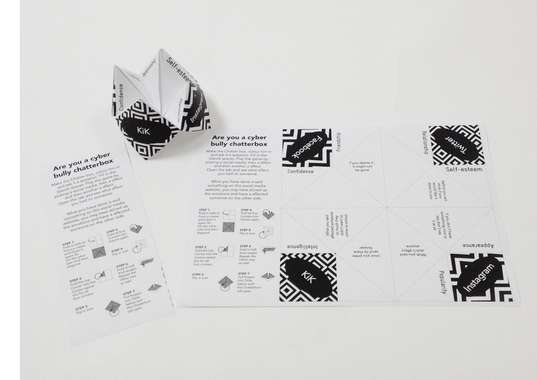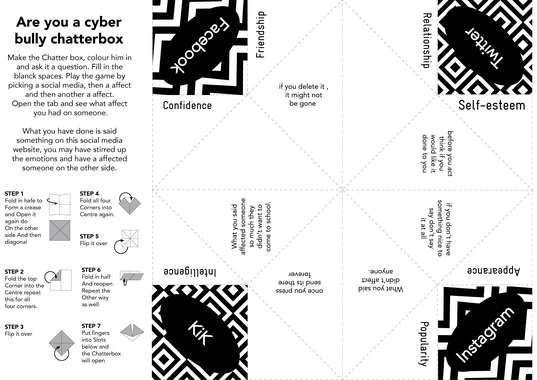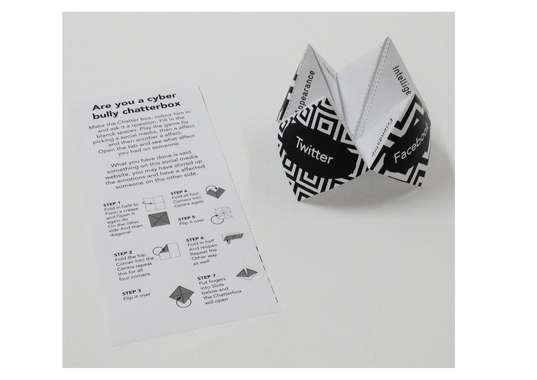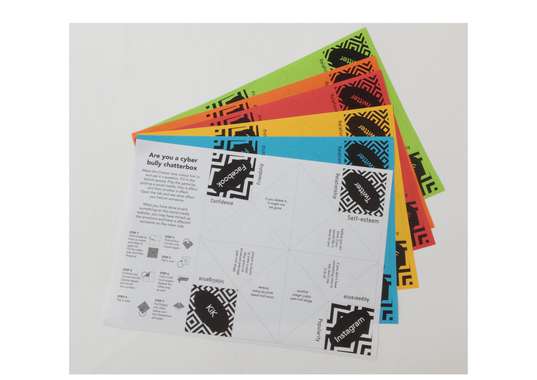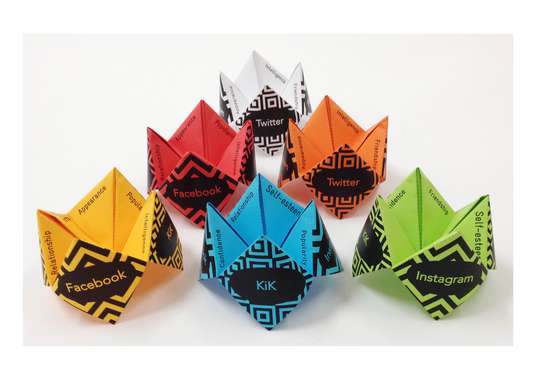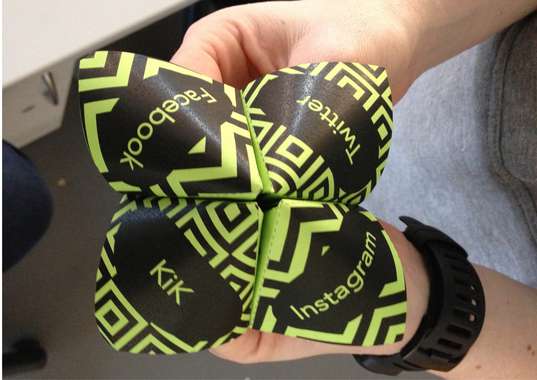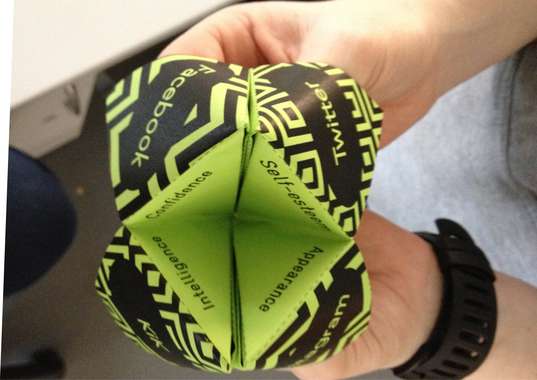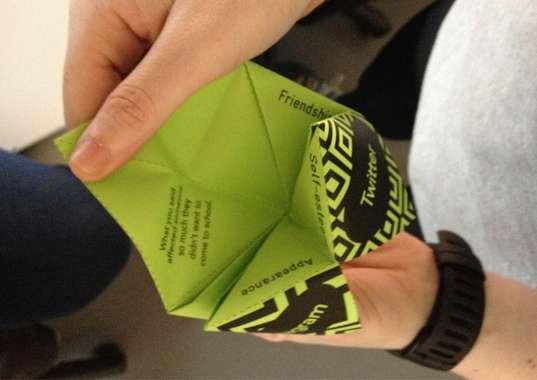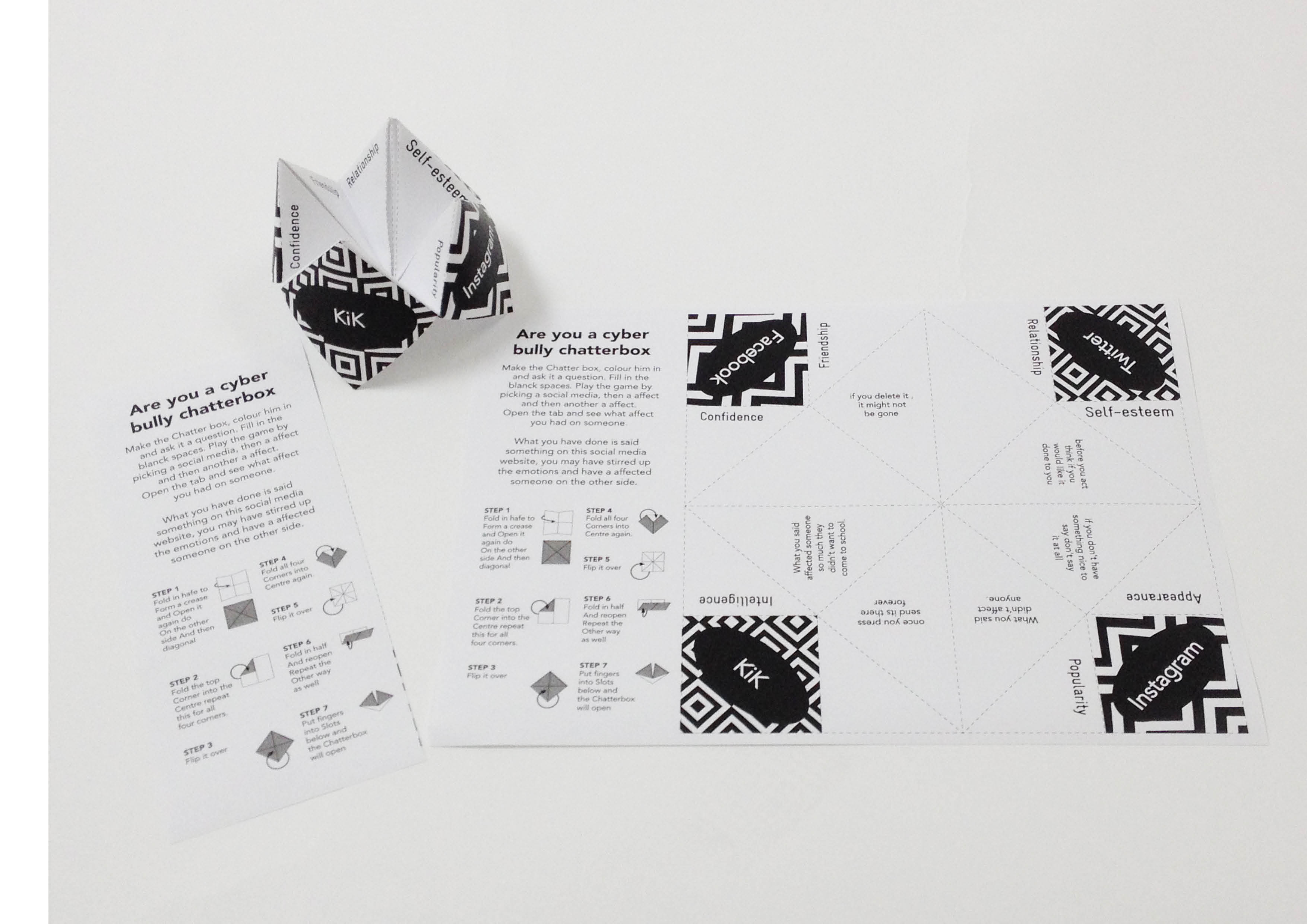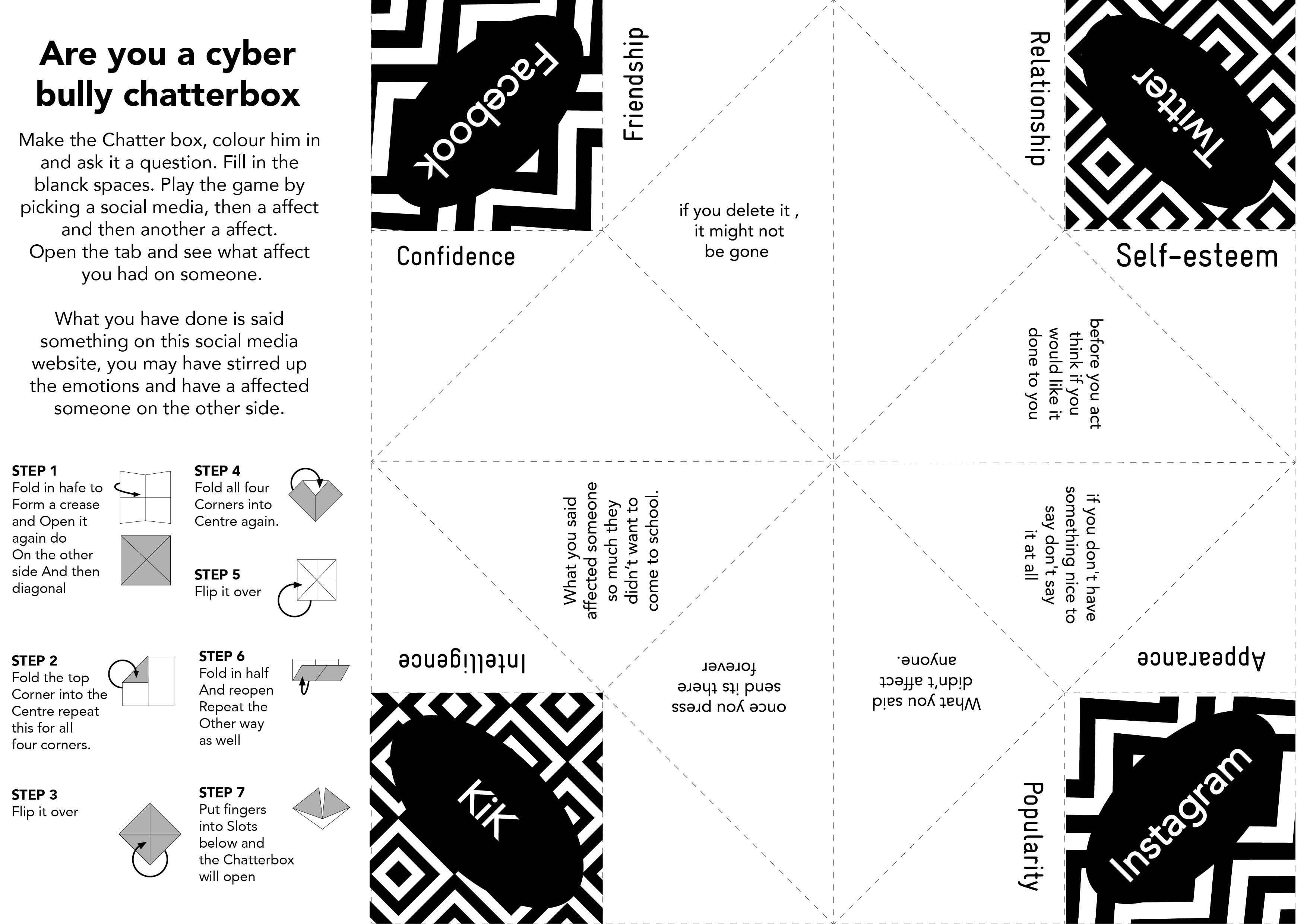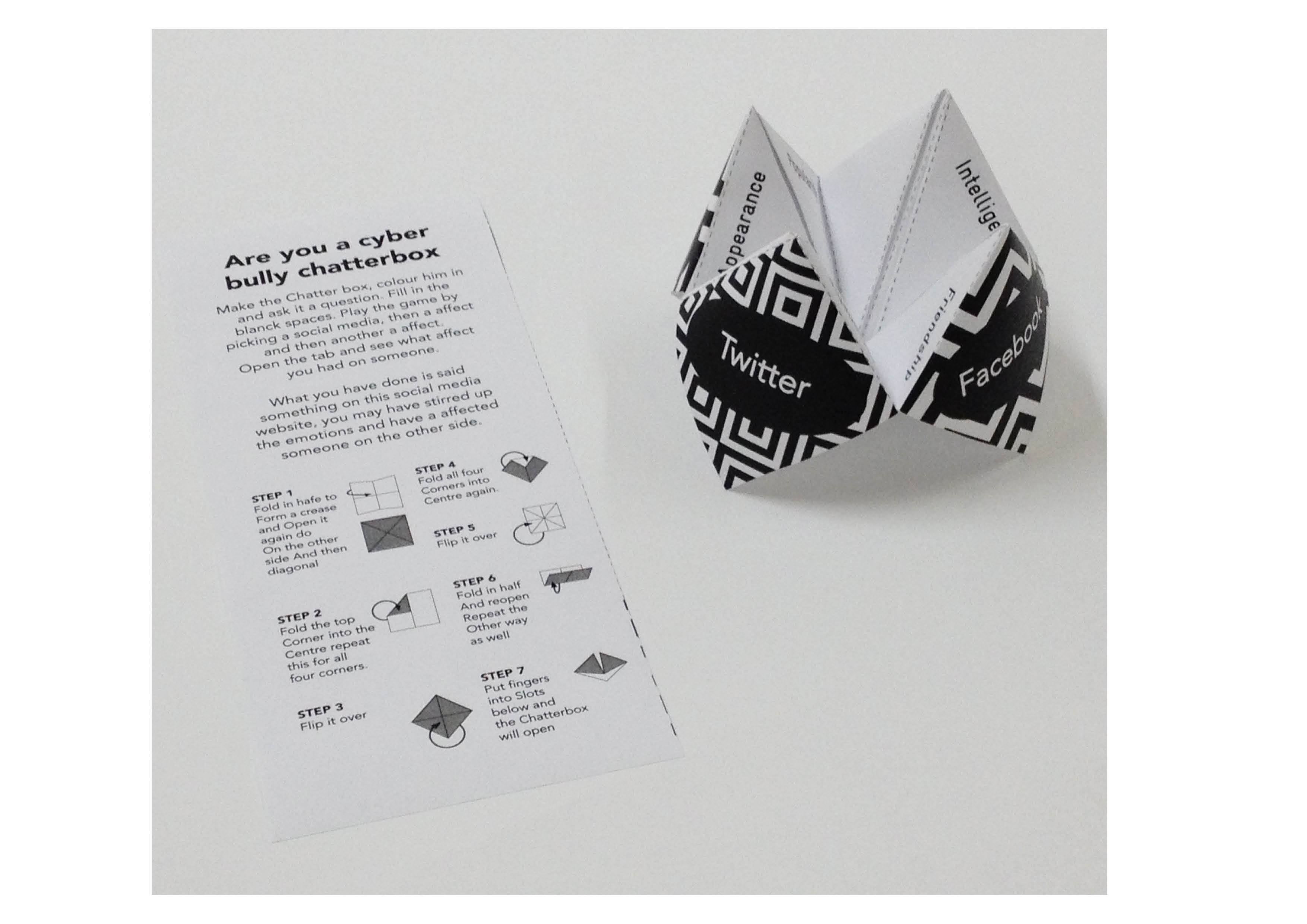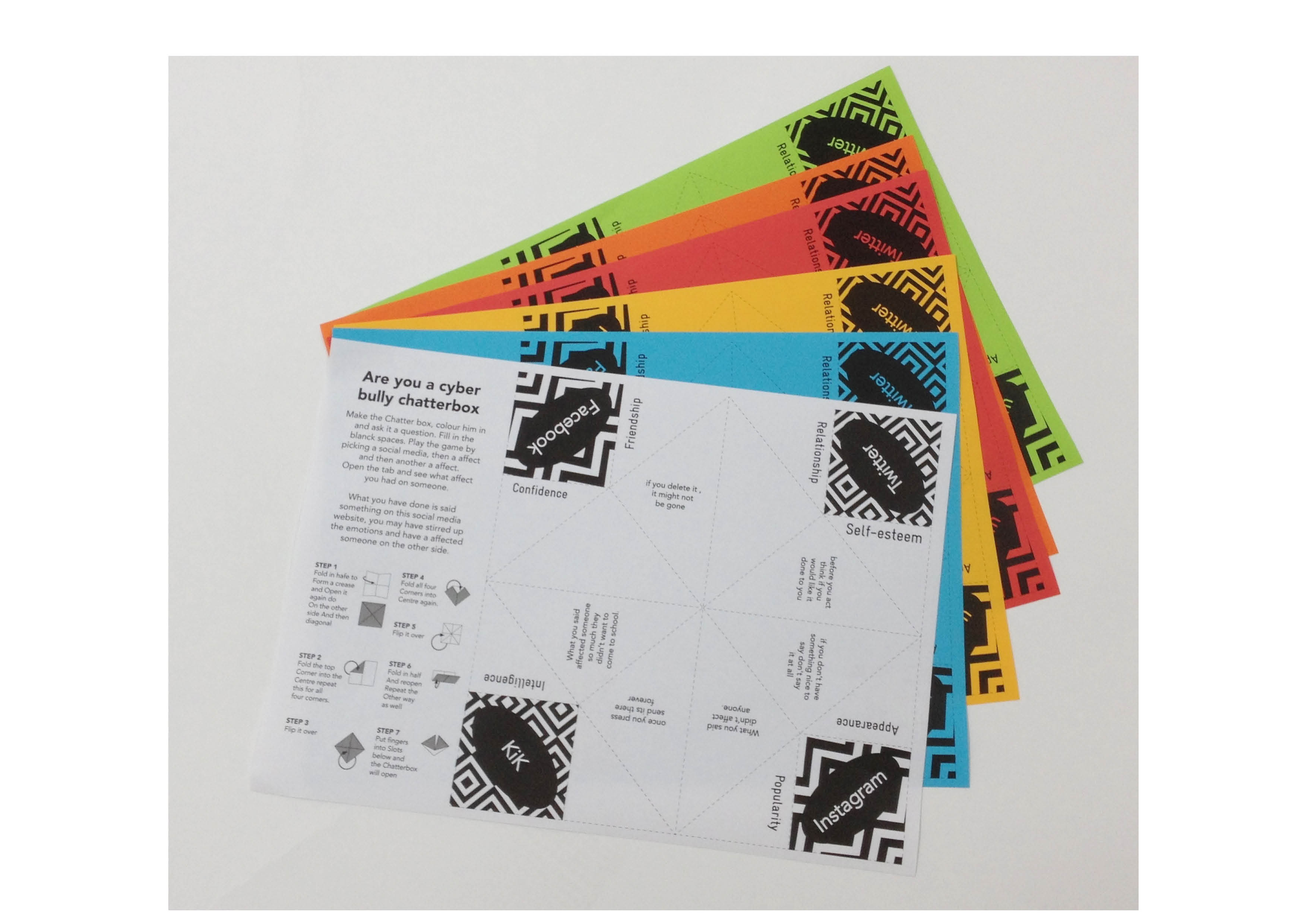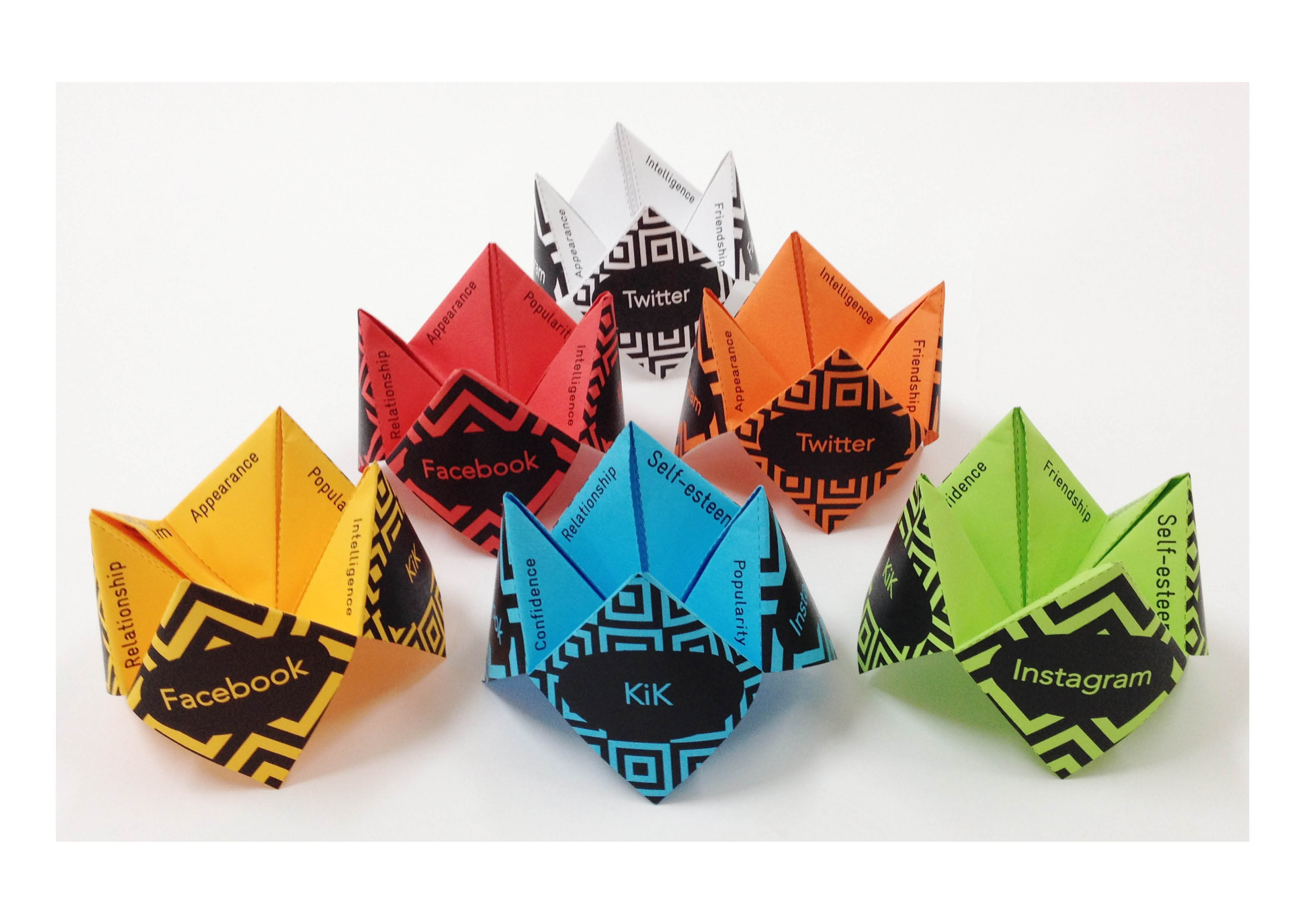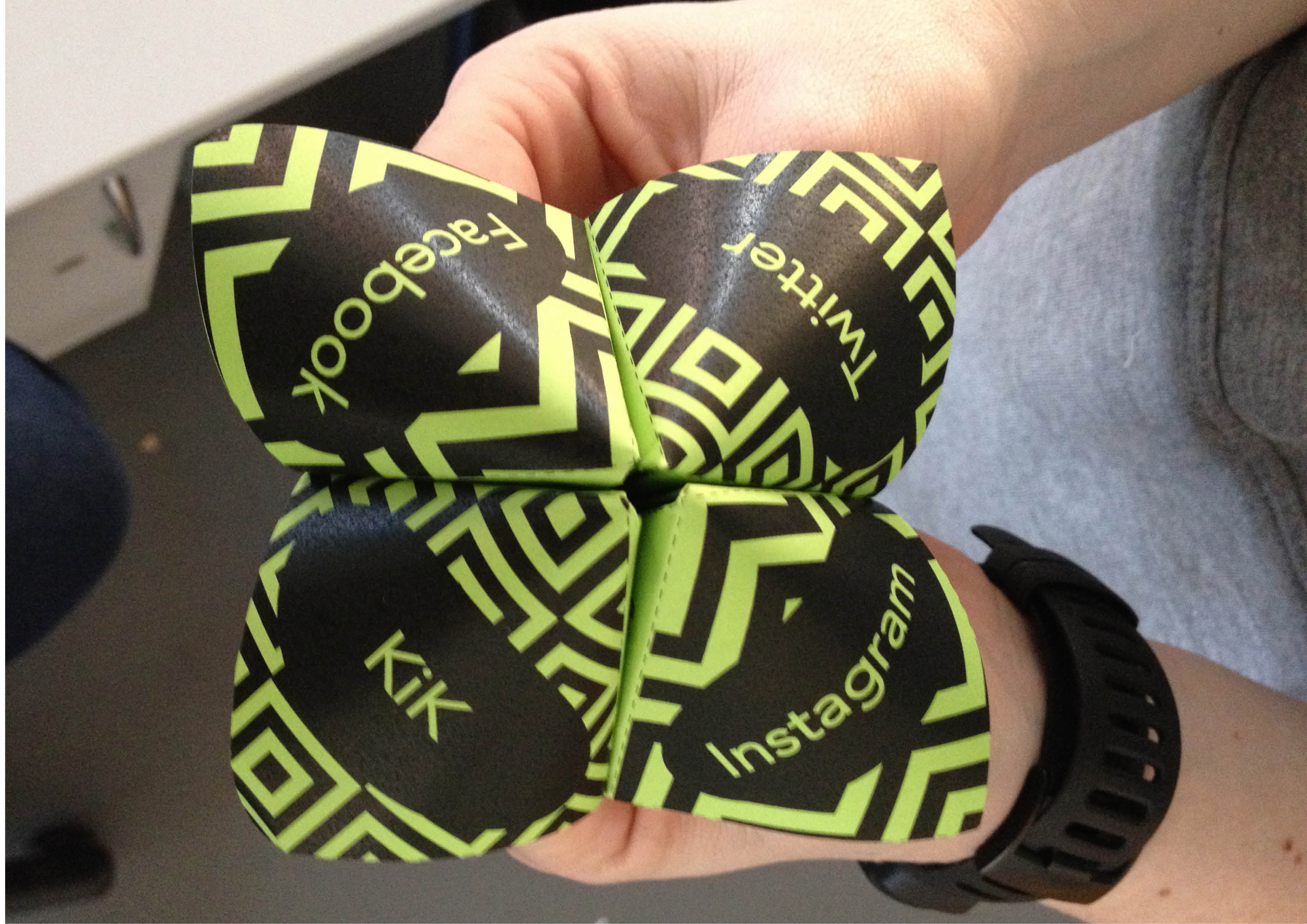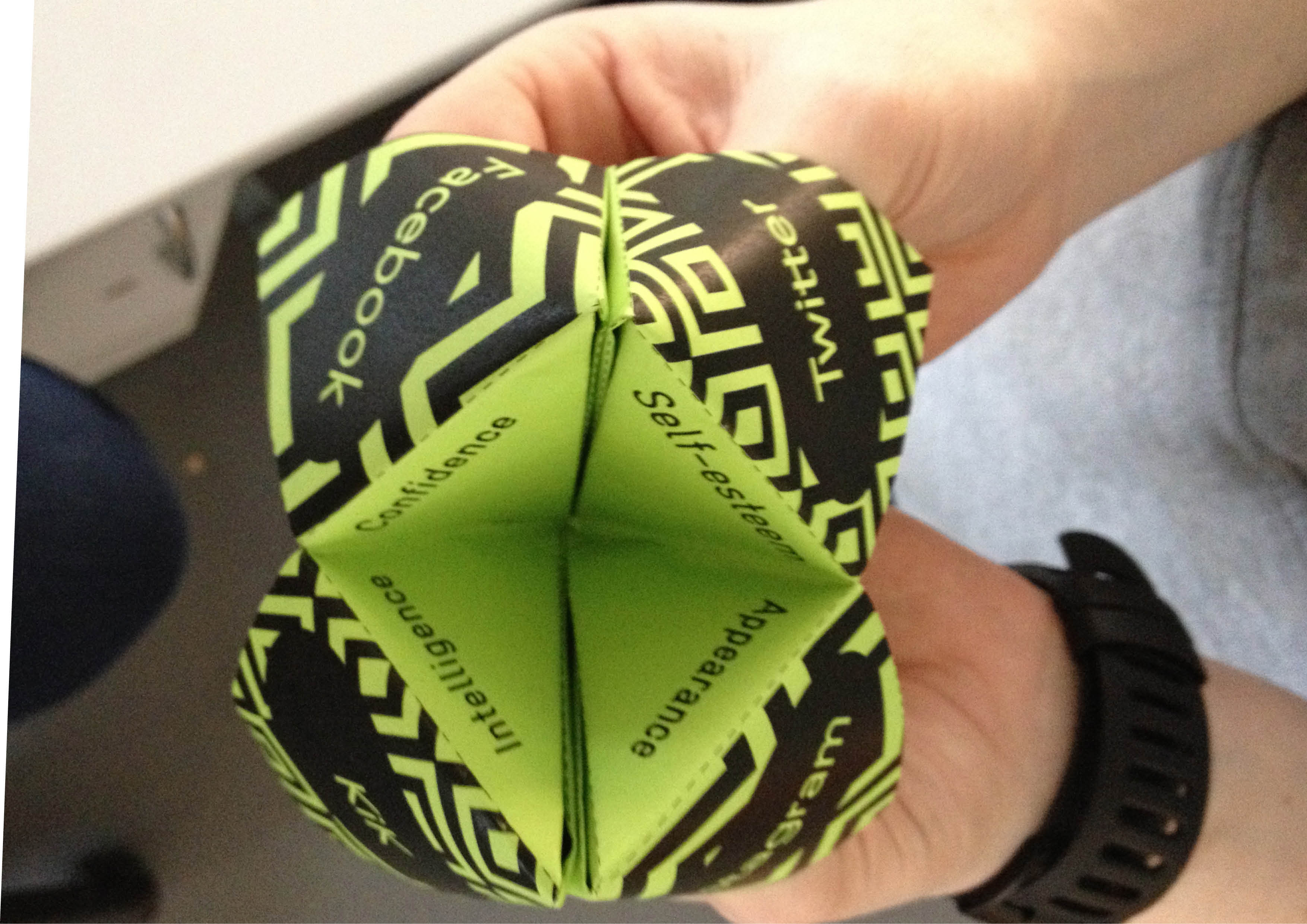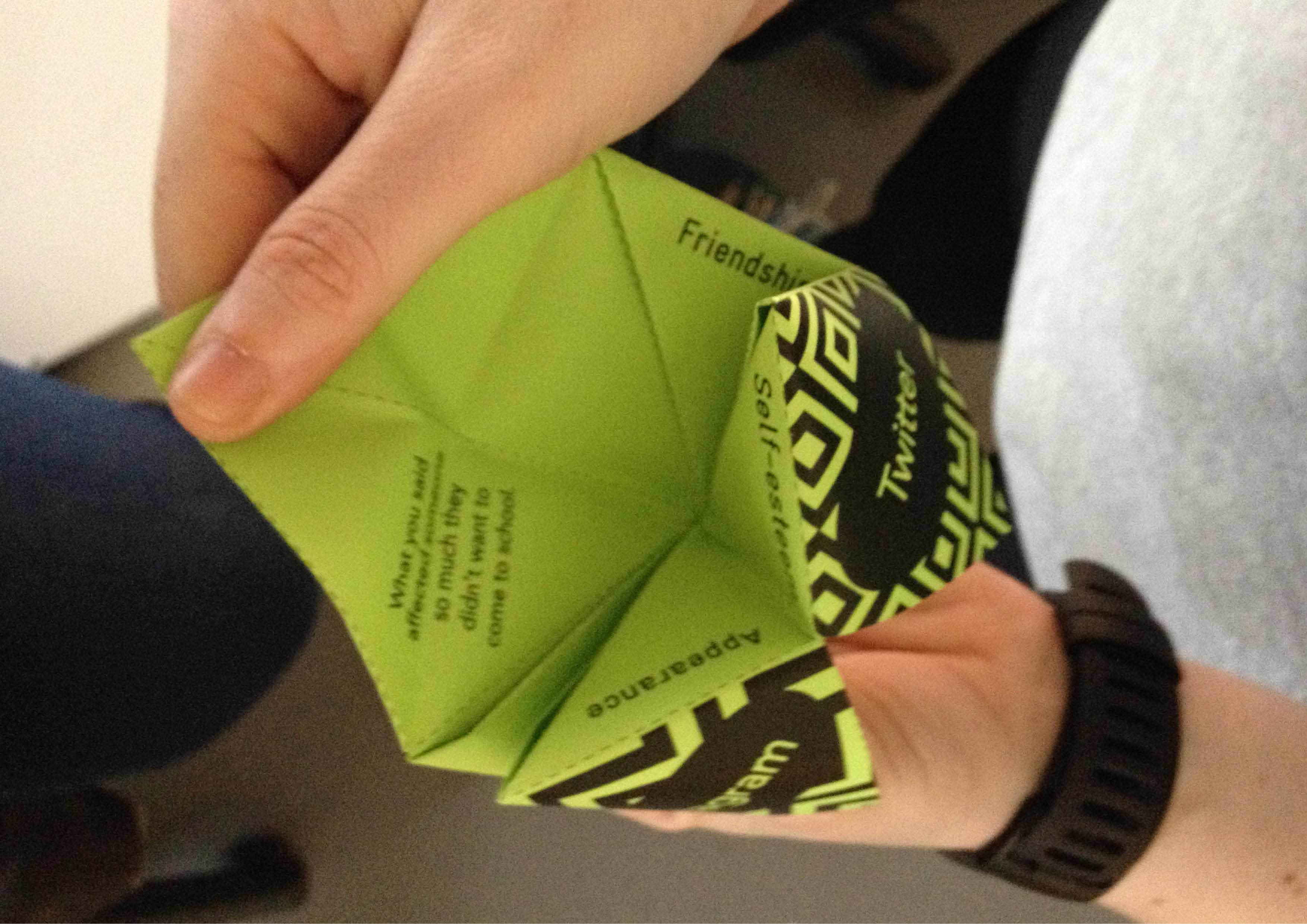Are you a cyber bully chatterbox?
by Heidirixon14
This work has been commented by 2 curator(s). Read the comments
Title
Are you a cyber bully chatterbox?
Headline
cyber bully chatterbox?
Concept author(s)
Heidi Rixon
Concept author year(s) of birth
1992
Concept author(s) contribution
I created, design and printed toe work
Concept author(s) Country
Australia
Friendly Competition
Radical intimacies: dialogue in our times (2014)
Competition category
Visual communication practice
Competition subcategory
static
Competition field
academic
Competition subfield
student
Subfield description
Federation University
Check out the Radical intimacies: dialogue in our times 2014 outlines of Memefest Friendly competition.
Description of idea
Describe your idea and concept of your work in relation to the festival outlines:
I responded to the theme dialogue, by creating an iterative dialogue chatterbox, basing the information on cyber bulling. I created a work sheet that could be used in primary schools to teach students about the affects of what people say online.
What kind of communication approach do you use?
I have created a printable work sheet for teachers to use in teaching the affects of cyber bulling. On the sheet is how to make the chatterbox and how to use it, as well as leaving spaces to make it their own. I talked a lot with my sister how is studying teaching and her friends to find out the best way of commutating the words to the students. They also pointed out that most schools don’t have coloured printers, so the colour version are to show that it can be printed on to other colours to get kids to interact with them.
What are in your opinion concrete benefits to the society because of your communication?
I am hoping to make primary school students to understand that what you write on social media websites. That what they say can have a negative affect on someone else and that you cant stop everyone from seeing it.
What did you personally learn from creating your submitted work?
I learnt that cyber bulling goes as younger as student in primary school, After discoing with my sister and her friends who is studying to be a school teach she has notice it though out different schools and that there is not real teaching tool to use to help student learn about the affect of cyber bulling.
Why is your work, GOOD communication WORK?
This is good communication of dialogue because it evolves two types of dialogue, the cyber kind and personal interaction of dialogue. Cyber dialogue because of its subject matter, and personal interaction dialogue in that the viewer and someone else has to interact in order to use the chatterbox.
Where and how do you intent do implement your work?
I intent the work sheet to be online, either on kids help line and other teaching websites, and a PDF version to school to use. This way teacher can print it off as many as they want to use during their class. Then they use it as a excise or a active to teach about social networks, cyber bulling and the affects they have on people.
Did your intervention had an effect on other Media. If yes, describe the effect? (Has other media reported on it- how? Were you able to change other media with your work- how?)
The work sheet is to be place on the internet, and The work sheet will affect what is said and how social media sites are used by primary school students. Hopefully the work sheet will teach them that people iterate things differently when reading text.
Curators Comments

Dr Zoë Sadokierski
This is a fun way to raise children's awareness of a serious issue, and one that must be discussed as much as possible, in as many different ways as we can imagine.
As a teaching aid, the project is well considered because it is a creative activity (the children can make and decorate their own chatterbox) which allows the teacher to have them actively participating in the learning experience, and once created, the chatterboxes allow students to speak to each other or the teacher about a serious issue, under the guise of a game. Your design about dialogue encourages dialogue – clever.
It's great to read that you spoke to your sister and her friends about how to make this engaging and suitable for your audience – it can be difficult to speak to primary school students in person, or to user test your design with children, so speaking to people who deal with children and education is a great way to make sure you are designing thoughtfully for this group. Considering the lack of colour printing options and deciding to use coloured paper instead is a great example of how consultation can help you make your final design more usable for your audience.
The typography and graphics are bold, simple and appropriate for your audience.
Please always have someone read over your written language to help you correct typos and grammatical errors. In particular, for a competition entry about Dialogue, it is important to show you have attention to detail and respect for your audience.
Roderick Grant
I think the choice of meme in this case - the chatterbox - is excellent. The use of gameplay to question our participation in social media - so often thought of in toy like terms - is a small but significant bit of inspiration. We adapt and adopt rules when we play, and the simple actions of the chatterbox lead to much more complex consequences of participation in online media.
In a sense, its both the play, and the dialogue that comes (would come) from the play that is significant here - perhaps I'm thinking of playing this with my young daughter, but isn't that the point?
The formal choices here - the fluorescent paper, the standard sheet size - all contribute to this as a kit of parts, one in a series of chatterboxes, which I think is a strength. While all design work can be refined, I'll leave such comments alone in favour of asking for alternate means of demonstration - animation and motion for instance?
Other thoughts - can each social media be linked to independent sets of consequences - Facebook and instagram differ, but if they are both wrapped into their own chatterbox, how would the message sand dialogue differ for each media platform?
There's opportunity here to be more specific after some reflection on what we do when we engage with each media. Would the instagram chatterbox be primarily delivered in image(s)? Facebook in typography?
The aspect of the game, or object I truly enjoy is the folding - its rich conceptual territory - and I encourage you to really dig into folded space as a way of thinking. What happens to simple materials - even paper - when it is folded? What can each crease, each surface be made to do or say before and after it is folded?
In a sense, the chatterbox limits you in the folding aspect, as the folding is just to allow for hiding and revealing - but perhaps if each chatterbox is limited to one media platform - i.e., the instagram chatterbox - that the folds can do more than just fold, they can mean more?
Its a good foundation and to me, worthy of a push into deeper specifics, and perhaps a continued investigation in animation? I think the simple visual vocabulary you've started in the instructions could serve to become a basis for something age-appropriate and compelling as a proposal for a game.
This last comment - about making an actual game vs. a proposal for a game should make you think - and hopefully spur some evolution. If we work very practically, sometimes we're limited by things needing to 'work'. If we're making our point through a proposal for a game or other device, then the practical workings might not need the same resolution.
The choice of the game remains a good foundation, and I encourage you to push on this project to improve its depth as a means of dialogue with ourselves and the media we participate in as social animals.

